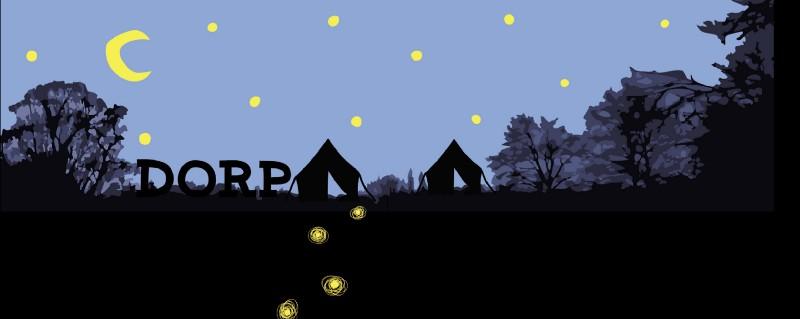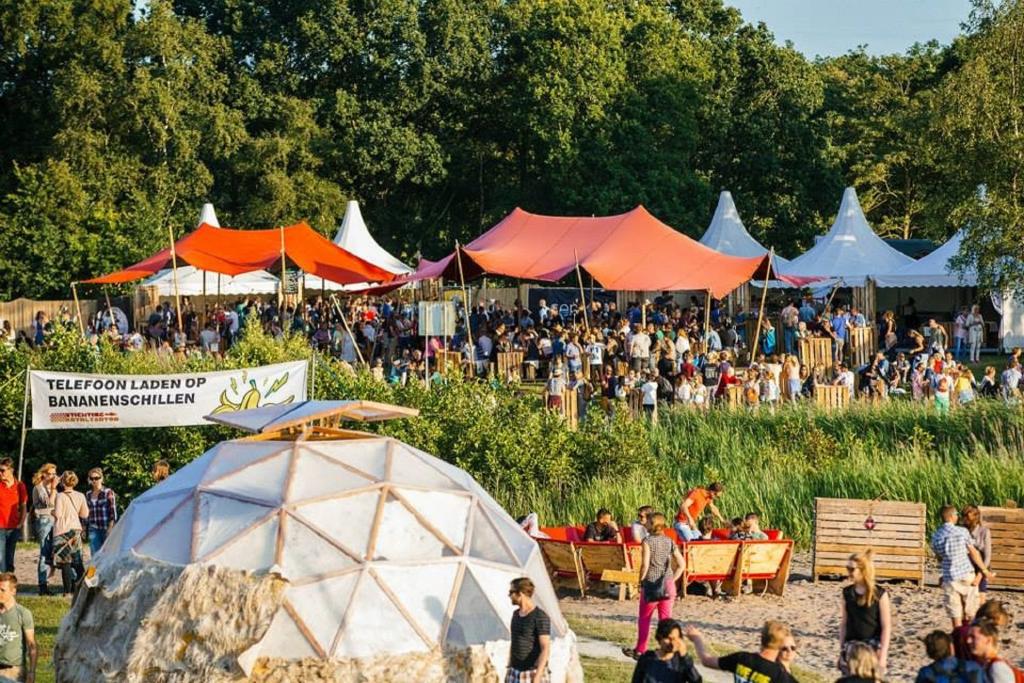Fay de Grefte interviewed Gertjan de Werk for TurnThePage about the story behind DORP!
DORP, the makers dream
Dreamers, in order to be successful, always need a place to bring it back to earth, to test their ideas. Being caught up between the walls of your own experience, you limit your findings; that is why we prototype for other people. The question is: where do you find a group of people with different ages, different backgrounds and different experiences that all have the time and the enthusiasm to test your product and share their opinion?

A festival! This is why DORP exists. As part of Welcome to the Village, a festival in Leeuwarden, DORP is a place where everyone can help everyone. People who come to this event are busy with their own project, but take the time to help and assist others. If an engineer has problems making a friendly interface, he asks the artist. If the artist wants to build an interactive piece, he asks the engineer. When you build up a product, you see it fail but you can rebuild it with a techie. Or when you see your product being disliked, you can rebuild it with an artist. This is how young professionals can come to the best physical expression of an idea.
There is an entire story behind DORP and it all started with Gertjan de Werk. He realised that quite often students are limited by the walls of their university. Tearing those walls down requires a lot of energy for students. The solution would be another place for students to gain experience. Gertjan told us the story of how it all went down.
I wanted a course at the TU Delft that for once was completely focussed on the practical aspect of developing products. For this course we had been given a spot on Lowlands where we could build and test different kind of pavilions, this project was called Llowlabb. This did not work out the way we wanted, due to miscommunication in the team, but the idea of prototyping on a festival was still standing. Under the name of Innofest we found eager students and benevolent festivals who could help us pursue our dream.
Because we wanted to make this dream reality, we took on the first project with a graduating student, Jan, and his Kartent. He had a great idea and I had 30 students to test it. We went to ten different festivals in one summer and Jan learned more than he had learned testing it out in his backyard in one year. Thanks to these experiences the product development was at his final stage but he had nobody to sell it to. That is when we came to Welcome to the Village and we asked if we could sell the Kartent to their visitors. They were very enthusiastic but immediately wondered why we did not suggested it before they sold the tickets. That way they could sell the Kartent alongside the tickets, as a service. A business model arose as well as a wonderful collaboration. This collaboration thrived under the name of ‘DORP’.
We are now 3 years into the evolution of Innofest and see that innovation has such a big value. We need to collaborate with artists and techies, we need worlds to come together and most of all, we need to adapt to present ideas so we can design for the future.
For the makers of Welcome to the Village, the festival should function as a miniature society, allowing people to introduce their product or idea to the real world. Designers should be able to see if it can be built, experience reactions of people and collaborate with all sorts of people. If the product works here, it should work in the real world too. Another goal is that it is a fossil-free and waste-free festival. Ideally, these two goals combined will provoke an environmental change. If it works in a small society, why would it not in the whole country? And if it works in the Netherlands, why would it not in the rest of the world? Welcome to the Village is essentially a place where you can test the future.
Rapid prototyping is something we do not learn as students and we do not often use as professors, but something we need desperately if we want to succeed. Take a look at the marshmallow challenge, where you have to build the tallest spaghetti tower with a marshmallow on top. The most successful towers are not those of marketing managers, CEO’s or engineers. Children appear to build the highest towers because they start building the second they get the assignment, allowing them to fail five or six times and succeed the seventh. Whereas when you only build it once, the tower will probably fall over when you put the marshmallow on top. This knowledge is essential and often overlooked. We should always remember to prototype, even in early stages of the process. We should make and break, try and fail.
Read the full article on "TurnThePage" and learn more about DORP.

